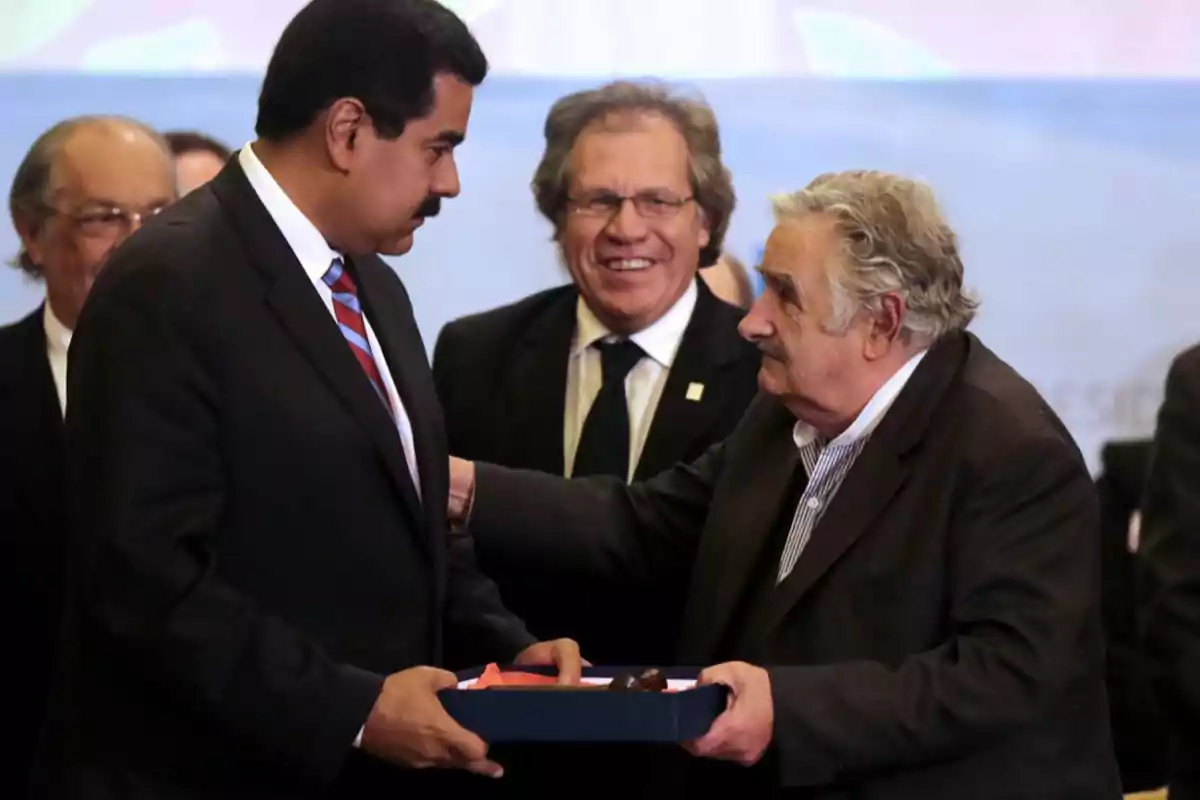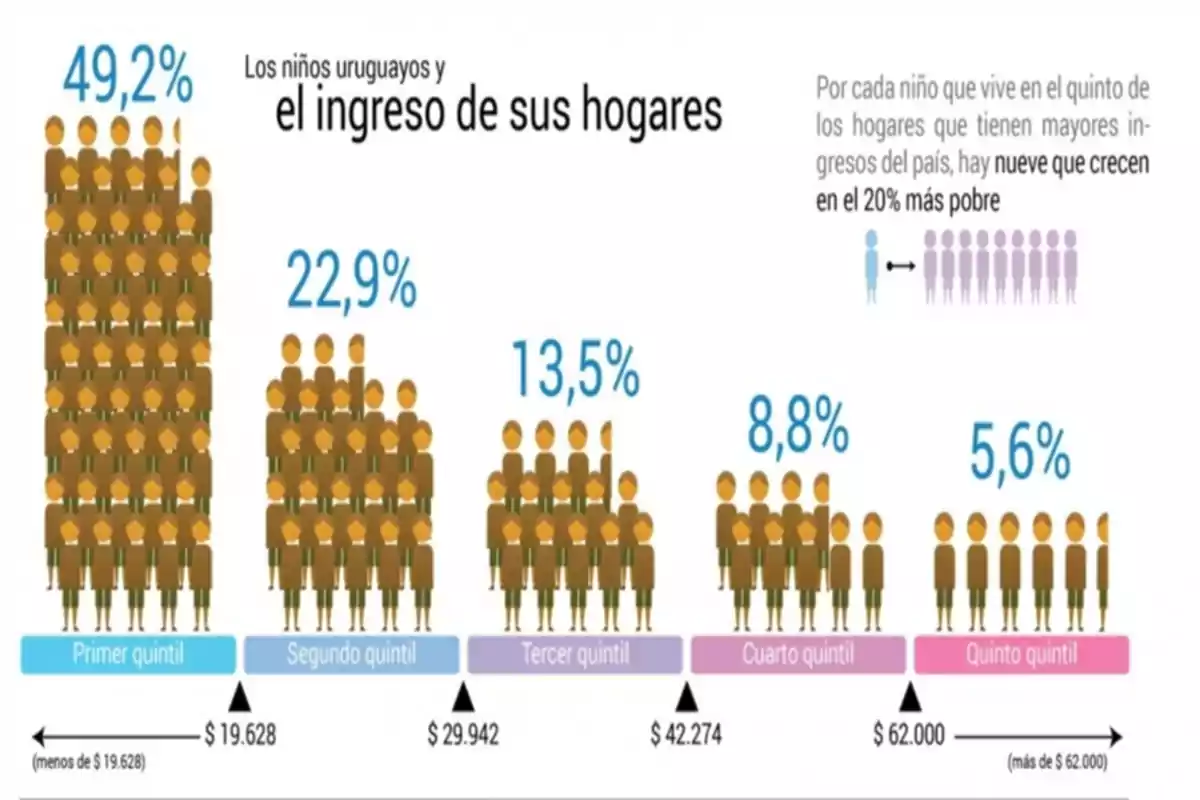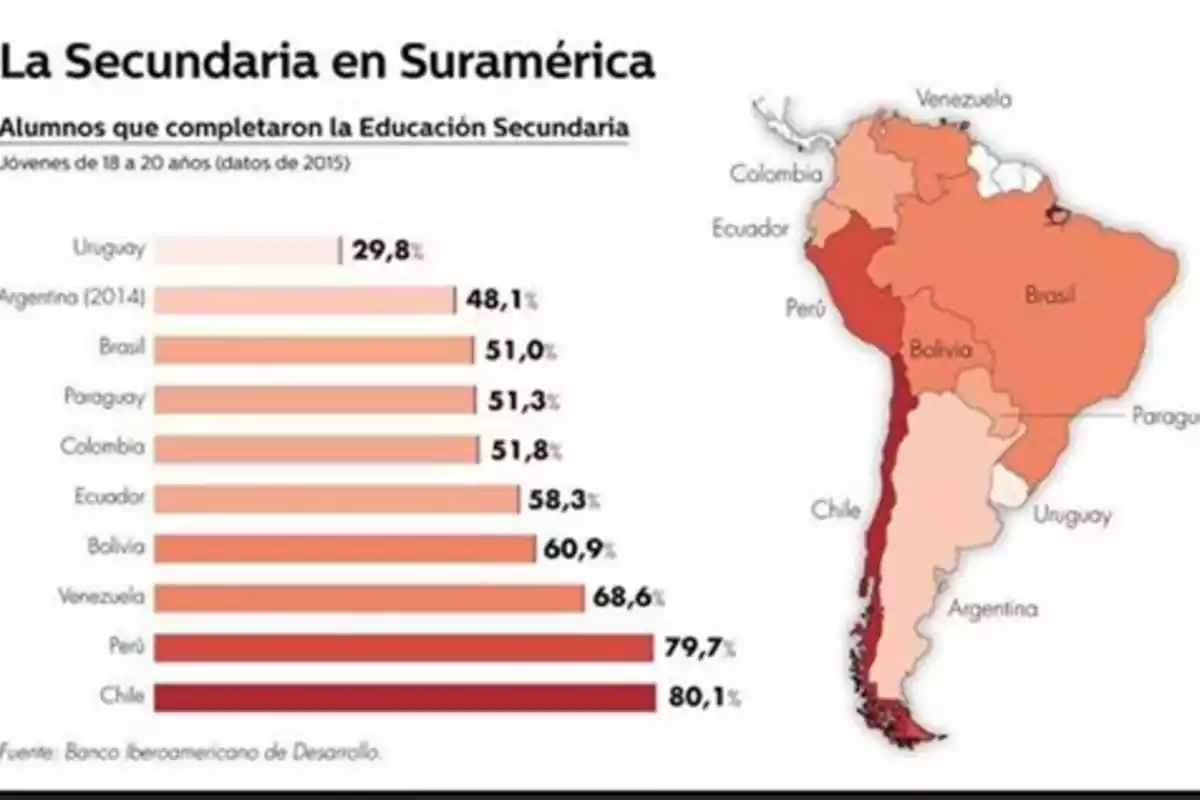
The Front's Legacy 2005-2020
Chronicles of a Lost Time
Everything started on March 1st, 2005, with absolute majorities in politics and social matters, with people hopeful for something different, with unions that actively participated in the electoral victory; in the world, a unique boom in the last 50 years increased export and foreign investment revenues to unprecedented levels; in the region, there were also friendly governments of the FA; all this added to a critically weakened opposition…
Everything was set for the realization of great governments. However, we witnessed the fastest exhaustion of the greatest political illusion of recent times. Here, the term illusion is applicable in its broadest sense. Everything is attributable not to the inability or unwillingness, but exclusively to the NOT KNOWING, THE INCOMPETENCE, THE IDEOLOGICAL BLINDNESS, AND THE PRIVILEGES OF POWER, which culminates in arrogance and its natural consequence: mythomania. Aggravated, of course, by the leftist condition of the coalition that governed us uninterruptedly for 15 years: that is, they felt invested with a mission that, the more it failed, the more it clung to the power that, finally, as in all superparty regimes, ended up becoming its only objective.
BUT, LET'S GO STEP BY STEP TO UNDERSTAND THIS "LOST TIME..."
THE INFLATION declared by Vázquez's government before, then by Mujica's, and then again by Vázquez of an 8% annual average is not real, and unfortunately, the goal achieved since 1992 of single-digit inflation has been lost, currently standing at double-digit inflation, that is, above 10%. According to our research, the real inflation is around 30%.
THE LIE OF OFFICIAL INFLATION: data provided by the journalist of ESTADO DE SITUACIÓN Álvaro Alfonso
INCREASES BETWEEN 2008 AND 2018
June 2008 June 2018
Ground coffee 500 grs $109 $246
Tea 25 bags $26 $68
Yerba $60 $159
Rice per kilo $25 $39
Sugar $15 $41
Cookies $34 $98
Beef tenderloin per kilo $120 $689
American bread $25 $95
Flour $17 $30
Polenta $12 $22
Soybean oil $39 $49
Mayonnaise 125 grs $12 $28
Lentils 450 grs $39 $83
Beans $36 $69
Tuna $15 $72
Peas $8 $23
Ketchup sauce $31 $89
Biotop yogurt $36 $62
Ice cream 1 lt $77 $163
Hamburgers $19 $55
Dulce de leche 1 kg $32 $112
Strawberry jam $19 $127
Mineral water 1 lt $17 $38
Pastries $89 $272
Toilet paper $15 $70
Soap $15 $32
Deodorant $35 $136
Toothpaste $23 $85
TOTAL SUM $1000 $3100
Real increase: + over 200%
Official inflation: 78.43%
THE DISTRIBUTION OF WEALTH: despite the country receiving about 200 billion dollars, the purchasing power of workers barely reached that of the late '90s, and 60% of what they had in 1968. The share of the wage mass in the country's global product was lower than in the last government of Julio María Sanguinetti, despite the economic boom being much greater.
As never before in the last 50 years, the "cake" (GDP) grew THANKS TO THE EXTERNAL BOOM by 500%: from 11 billion dollars to 50 billion dollars. However, the only socioeconomic class that grew in the distribution was the richest: it went from 17 to 22% of the share. The GDP grew 500%, the SMN grew 200%.
*
The first Vázquez government received the country in economic growth, coming out of the worst crisis in history with a deficit of 0.4% of GDP
. Despite the unbelievable external boom, it ended its management with a deficit close to 3%. With Mujica, it reached 4% annually, and the parafiscal deficit was 6%.
The total accumulated deficit of each of the Frente governments exceeds 20 billion dollars.
Astori's tax reform increased the fiscal burden on the Uruguayan population by more than
100%. As an example, in July 2009: with the old and unfair IRP, the State would have
collected U$S 200,000,000; with the IRPF, it collected U$S 480,000,000. Today it reaches almost 3,000
million dollars.
Of the $67 out of every $100 that the weight of the State on wealth generation supposed in 1980, which would later go to $57 out of every $100 in 1994, it now stands above $77 out of every $100. In other words, it's as if you worked from January to August for the state, and from September to December for yourself and your family.
To make matters worse, the cost of the state is distributed as follows: 11% is paid by the richest, 75% is paid by the middle class, and the rest, 14% by the poorest, which shatters the old
assumption that "those who have more pay more" of Vázquez's government. Pure rhetoric because it was quite the opposite.

SOME DATA ON PROGRESSIVE STATE EXPENSES 2016 (in dollars)
Cleaning, sanitation, and fumigation 67,100,000
Surveillance and security services 54,200,000
Per diems within the country 45,900,000
Chemical compounds, inks, and paints 36,200,000
Extraordinary, professional, and technical expenses 32,500,000
Losses from lawsuits and compensations 21,300,000
Phones and IT 21,500,000
Per diems abroad 17,200,000
Clothing 11,600,000
* Almost 15,000 vehicles make up the government fleet; when the Frente governments began (March 1st, 2005), there were 3,395. Likewise, fuel consumption went
from 16 million liters per year to 47 million in the same period.
* THE REAL POVERTY: the Frente governments blatantly lied about poverty levels.
According to the INE, poverty reached 25.7% in 2006; it dropped to 21.9% in 2007, to 16.9% in 2008, in 2012 it fell to 13.7%, to continue falling to 11.8% in 2013, 9.7% in 2015, and 7.9% in 2017.
* For UDELAR, 49.2% of children live in poor households; for UNICEF, 56%
while for the INE, 46% of Uruguayan children have some NBI…
* 46% of children have some NBI according to the latest INE census.
* 49.2% of children are poor, according to UDELAR and the INE, and 14% have growth delay due to malnutrition, recognized by Sen. Constanza Moreira (pre-candidate in the
2014 Frente internal) in BRECHA.
* 50% of children under 2 years old suffer from anemia, 40% eat less than they need
to grow healthy, and 4% go hungry.
* In 2018, 34% of Uruguayans claim to have insufficient income, 42% define themselves
as lower class, and 17% go hungry, according to LATINOBARÓMETRO data.

The INE defines the country's poor population based on people's income. Thus, someone is
poor if they receive per month, at August 2019 values, less than $14,000 in Montevideo,
$9,500 in the urban interior, and $7,700 in the rural interior. To reach these figures, different types of income are computed: salaries, family allowances, pensions, etc. From January 2008, the average monthly Fonasa fee was also computed.
The problem is that including Fonasa in people's income without considering if
they effectively use that item implies statistically increasing their income. But
it is an artificial increase. In particular, for the population residing in localities of 5,000 or
more inhabitants, according to official results, it went from 36.6% of poor in 2005 to 12% in
2013, 9.7% in 2015, and 7.9% in 2017. However, if the artificial increase in
income resulting from the methodological game of including the Fonasa fee is set aside, there are calculations
that establish that the percentage of Uruguayans living below the poverty line
would exceed 30% of the total today. Only in Montevideo, the number of people living on the street increased
600%; the shantytowns (settlements) throughout the country went from 360 to 656 (86% without
sanitation) and counting. It should be added that according to Un techo para mi país, 61% of people
living in settlements do not attend any educational center…
15% of workers earn less than a national minimum wage; 40% earn less than two
SMN and 70% less than 3 SMN. With retirees, the situation is even more dramatic. However, the government gives foreign rich people 3,000 million dollars in tax benefits per year, something that will dramatically increase with UPM. The brewery AMBEV has been given 150 million dollars in subsidy, despite being the third world brand in beer sales, money with which they could have bought about 3,000 ambulances…
DESPITE MORE THAN A DECADE OF IMMEASURABLE WEALTH, PROGRESSIVE URUGUAY caused ALMOST 800,000 POOR...
SITUATION OF URUGUAYAN RETIREES
There are about 616,962 retirees and pensioners in our country.
Below I detail what they earned by brackets at the end of the Frente period in the
Government
They earned ($) Total %
up to 7,222 48,000 7.46
from 7,223 to 10,833 197,528 32.02
from 10,824 to 21,666 198,771 32.22
from 21,667 to 36,111 91,178 14.78
36,112 and more 83,485 13.53
As you can see, 71.7% earned below 21,666 nominal pesos, with almost
60% of that total concentrated between 7,222 and 10,833. I remind you that the Basic Family Basket reaches
85,000 pesos per month.
In large numbers, while the Government spent about 200,000
pesos per year on each average retiree, in that same period of time it spends about 900,000 pesos on each criminal
it keeps imprisoned in the INR, of which 77% of those released each year reoffend.
Unemployment at 7% is another of the great lies of the Frente governments.
In the countryside, 30% of jobs were lost between 2011 and 2016; in the
clothing sector, 43% in the same period.
Closed companies
- PLUNA
- ALAS U
- PARMALAT
- LIFAN
- FRIPUR
- RAINCOOP
- ECOLAT
- AGUA IVESS
- NORDEX
- PAYLANA
- DANCOTEX
- KEGENOL
- JASSER
- TIEMPOST
- YASAKI
- CERE OIL
- CALAGUA
- CHERY
- BIG PLASTIC
- ELINORD
- SCHREIBER FOODS
- SANDUPAY
- HANKA
- CALVINOR
- PRESUR
- KENTILUX
- CODET
- GREEN
- GALIA
- KEBENOLL
- CUD
- CURTIEMBRE EL AGUILA
- TESSAMERICA
- URUPANEL
- LANASUR
- LACTINOR
- ECO ART
- FOTO MARTIN
- FRIGORIFICO MARFRIG
- FANAPEL
- REFRESCOS MÍO
- FUMAYA
- AGROLAN
- SHERWIN WILLIAMS
- PILI
- BARRACA EUROPA
- MOTOCICLO
- Colgate Palmolive
- Fleischman
- MORE THAN 12,000 SMALL RURAL PRODUCERS...
* PUBLIC DEBT has spiraled out of control, increasing by 350% compared to 2005. From 1955 to 2005 (50 years), it grew to 19 billion dollars (with interest), averaging 380 million per year. From 2005 to 2023, it rose to 77 billion, averaging almost 3,000 million per year, almost equal to that caused in the sum of the 12 years of military government (and with much fewer works, by the way). Each Uruguayan owes about $23,000. The situation worsened because the governments paid with more debt issuance, which raises the loss due to interest, and wages and rate hikes became the variable for adjusting the national budget.
Today it is already rescheduled for 2054. That is, our great-grandchildren will pay for what these irresponsible people have done. Every day we pay 66 million dollars abroad just
for debt interest. At the same time, the State loses 6 million dollars daily due to fiscal deficit.
PUBLIC INDOCTRINATION.
"The greater dissemination of education among the people leads to the reduction of crimes and vices".
JOSÉ PEDRO VARELA.
150 years ago, the great Uruguayan reformer, along with Colonel Lorenzo Latorre (his great mentor), clearly saw the role of education as the mother of all good and bad in a society. The FA governments applied the axiom in reverse. THE UNSTOPPABLE ADVANCE OF CRIMINALITY AND ADDICTIONS ARE THE CLEAREST SYMPTOMS OF THE FAILURE OF PUBLIC EDUCATION. SOMETHING THAT, OF COURSE, REMAINS IN FORCE IN ALL ITS TERMS TODAY.
I ACCUSE THE FRONT AND STALINISM FOR THIS FAILURE, BECAUSE FOR DECADES PUBLIC EDUCATION HAS NOT EDUCATED BUT INDOCTRINATED, WHICH IS THE OPPOSITE OF THE MEANING OF EDUCATION. AND THE FRONT AND STALINISM ARE RESPONSIBLE FOR APPLYING THE GRAMSCIAN DOCTRINE TO PUBLIC EDUCATION TO TAKE POWER FOR A LONG TIME. ESPECIALLY SINCE THE ORGANIC LAW OF THE UNIVERSITY IN 1958. WITH THE TOTAL CONSENT OF THE PPTT, IT IS NOT TOO MUCH TO SAY…
Today, in today's Uruguay, even in the school that once knew how to be Varelian, even in the school, the Gramscian theory is applied with all success.
The result is in sight…
"An ignorant people can only have governments that are in relation to their ignorance"; JOSÉ PEDRO VARELA.
AN EDUCATION FOR FAILURE: in the last 35 years, we have witnessed the greatest "brainwashing" known in the country's history. Our young generations have been
educated for failure and submission, in a public education governed by Marxism
that strictly followed the maxim of the Italian communist thinker Antonio Gramsci that "the
conquest of cultural power precedes that of political power".
25% of schoolchildren are not qualified to enter high school, despite spending 9 years of their short life in school!
56% of children in 6th grade do not know how to divide or multiply.
53% repetition in high school in Montevideo; 40% on average in the rest of the country.
65% do not finish basic cycle.
80% do not finish high school (92% among the poorest).
In just over two generations, we went from 1st to last place in school performance among the 10 South American countries: only 29.8% graduate in public high school. Argentina comes in 9th place with 48.1% graduation. First Chile with 80.1%, with whom we shared first place at the end of the Process…
58% do not study or work between 18 and 25 years old.
50% have no preparation to work according to the WORLD BANK report.
42% of Uruguayan students aged 15 do not have the basic learning necessary
to integrate into society, according to international evaluation tests. Uruguay is the
fourth country with the most repetition of the 65 examined.

In the area of language, 47% of 15-year-old students do not exceed the threshold of
competence (that is, they do not know how to read), while in mathematics 58% are below that
limit and in science 42.6% do not reach it either. In the most developed countries, that threshold doesn't
exceed 20%...
THE HEALTH REFORM, the well-known FONASA, had a deficit of more than U$S 700,000,000.
FONASA also served for the country's indebtedness with international financial
organizations.
Popular health and the management of public funds must be sacred for any
government, like the protection of lives and property and education, all characterized by their
poor management. But to the poor management in all these essential areas of a government
must be added an increasingly common fact in the Frente governments: the unbelievable
benefits of "companion" companies and entrepreneurs.
Since 2008, they caught a privatization fever (euphemistically called
outsourcing) and launched with the typical fanaticism of new converts to put in the hands of companion entrepreneurs any service that existed in Public Health with a huge increase in costs.
Let's see the results:
1. BEDS IN PRIVATE ICUs: the cost went from 7,500,000 dollars in 2008 to 21,500,000 in 2015 despite public ICU beds going from 80 to 191.
2. AMBULANCE TRANSFERS: 2008, 1,200,000 dollars 2015, 11,700,000 dollars
3. HOSPITAL CLEANING: 2008, 5,300,000 dollars 2015, 28,800,000 dollars
4. HOSPITAL SURVEILLANCE: 2008, 3,250,000 dollars 2015, 17,800,000 dollars
Between ICU beds, ambulance transfers, cleaning, and hospital surveillance, costs
went from 17,250,000 (last year of state management) to 79,800,000 dollars in 2015
(privatized cost): exactly 462% increase!
* (IN)SECURITY: while 73% of Uruguayans felt insecure and abandoned by the Ministry of the Interior (according to MPC research in 2017), a Uruguayan is killed every 20 hours (in a sort of death penalty imposed by criminals), totaling almost 4000 in the 15 years of FA government, with a robbery occurring every 5 minutes (almost 800,000 since March 1st, 2005). Within the inhumane Prison System (ridiculously called the National Rehabilitation Institute), 436 murders were committed.
* THE "FISCAL HELL": we have the highest consumption taxes in the world (like VAT),
the highest municipal taxes in the world (in Montevideo they increased 400% in 10
years), an income tax comparable to the richest countries, one of the most expensive vehicle registration fees in the world, and, of course, the most expensive cars in the world, with a
tax surcharge of 49%, not to mention one of the most expensive fuels in the world
(this last one is even more serious, because the company that produces it, monopolistic as it is, even
loses money). While taxes are charged even to retirees (as if the pension were
a salary), tax benefits were given to large foreign corporations amounting to 5.63%
of the annual GDP (the largest, by far, in South America: about 3,000 million dollars
we stopped charging the world's great billionaires). We impoverish our
retirees and workers to further enrich the Rockefellers, Soros, Rothschilds…
DEPOPULATION OF THE COUNTRYSIDE AND FOREIGNIZATION OF LAND.
From 1963 to 2005, an average of 5 people per day left the countryside, and the foreignization of land reached 16%. Since the "Frente era" began in power, the rural exodus
climbed to 34 people per day (700% increase) and the foreignization of land to 53%. The
numbers are as cold as they are compelling, but they do not reveal human suffering: where
did the thousands of compatriots who lived off their own land end up?
THE FRONTE LEGACY: is there anything to worry about?
1. Are the rich richer or poorer?
2. Are the poor less poor or more dependent?
3. Did political clientelism increase or decrease?
4. Did education improve or worsen?
5. Did health improve or worsen?
6. Is the state more efficient or more inefficient?
7. Is the state more costly or less costly?
8. Did teenage drug addiction increase or decrease?
9. Did the number of people living on the street increase or decrease?
10. Is the distribution of wealth better or worse?
11. Is the land increasingly national or foreign?
12. Is the banking sector increasingly national or foreign?
13. Is the industry increasingly national or foreign?
14. Did external debt increase or decrease?
15. Did taxes increase or decrease?
16. Did more people leave the countryside or not?
17. Did insecurity increase or decrease?
18. Did settlements increase or decrease?
19. Did corruption increase or decrease?
20. Did political discredit increase or decrease?
After exposing these 20 questions, just one final one:
IS THERE ANYTHING TO WORRY ABOUT?
"It's easier to fool people than to convince them that they have been fooled"
MARK TWAIN
More posts: